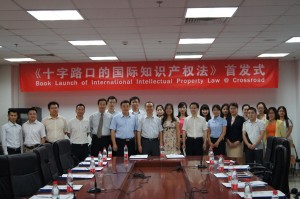Comments on ICANN new gTLDs Trademark Clearinghouse Implementation Plan
 At ALAC gTLD-WG meeting on Aug. 27th, I suggested that Implementation of Trademark Clearinghouse (TMCH) be a rolling out issue for the group to comment. It was agree by the group.
At ALAC gTLD-WG meeting on Aug. 27th, I suggested that Implementation of Trademark Clearinghouse (TMCH) be a rolling out issue for the group to comment. It was agree by the group.
After TMCH Meeting in Brussels on August 20-21, 2012, the problems existing in the current TMCH implementation model have become widely aware in the community. Although TMCH providers is scheduled to begin operating in October (3 weeks from now), ICANN’s planned implementation models for Sunrise and Trademark claims are apparently not supported by a majority of the new gTLD applicants. The current model’s complexity, restrictions on new registries and high costs are widely criticized.
At-Large community concerns that the problems in the current model may be against the public interests for the following reasons.
1. Burdensome Cost Model to New Registries from Developing Countries
On June 1, 2012, ICANN posted a Preliminary Cost Model projecting the potential fees to be charged to TLD registries and trademark holders to fund the TMCH, i.e. upfront fees $7-10k per registry and the $150 per trademark were “upper bands” of the fees.
Since the proposed cost model was strongly disputed at Brussels Meeting, the ICANN-delegated providers are now open to considering
other models including a transaction model whereby there would be a fixed set up fee paid by each registry (for each TLD) and a variable transaction based fee.
The proposed fees are believed expensive to most new gTLD registries. For new registries from the developing countries that have just paid off high application fees, it would become extraordinary burdensome for their future operation. The little-used Application Support Program is unlikely to offer any help as well.
At-Large community therefore suggests ICANN consider setting up Implementation Support Program to help the new gTLD registries from developing countries to handle the complicated and expensive TMCH implementation.
2. One Set Does Fit All
The current TMCH model uniformly applies to all the gTLD registries, irrespective of their difference. As a result, there may be a couple of registries obliged to pay for the TMCH services that are not need by them. In a hypothetical case, say “.IGO” for intergovernmental international organizations’ names only, the registry has to pay for TMCH services although no trademark will be eligible for registration under .IGO because IGO names are not “trademarkable” under the Paris Convention (with more than 100 member states).
On the other hand, uniform TMCH may not provide the tailored services that are really needed by the registries. For example, those GEO TLDs or IDN TLDs would like to restrict the Sunrise Period to only those rights holders having trademark registrations in their geo-regions or character set. But they would not be able to do so without setting up a completely separate process with the TMCH at additional cost or doing by themselves. This would additionally burdensome to registries, particularly from developing countries.
It seems that the ICANN drafted model as proposed / planned potentially limits market flexibility for variations of approaches to
sunrise and therefore drives the (per TLD) work on custom sunrises back to the TMCH. Instead, more open and flexible model deserves further exploration.
3. Not Actively Soliciting Consensus
Since the implementation will be very imminent and there still lacks of consensus in a variety of stakeholder groups on almost all aspects of the implementation model, At-Large community seriously concerns whether it would be implemented timely for the new gTLD program. Since the much-debatable Brussels meeting, there is no follow-up meeting scheduled as planned.
ALAC therefore advises the Board to take immediate action to ensure that ICANN is seen as moving forward with the TMCH in public interests and with community consensus.
4. Lack of Transparency
ICANN so far refuses to disclose a series of key documents on selectionof TMCH provider and TMCH implementation model, including Executed contracts for the provision of Trademark Clearinghouse services and Documents on cost and financial models regarding the operation of the Trademark Clearinghouse.
ALAC therefore request the documents be timely release to enable the community to access the critical information on TMCH.
Permalink Comments off




